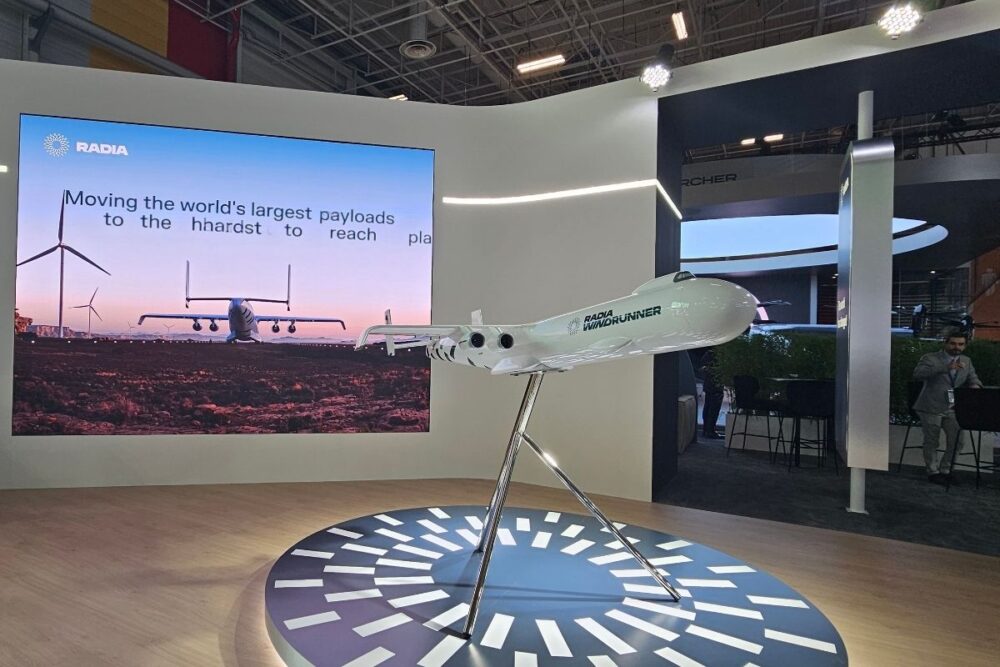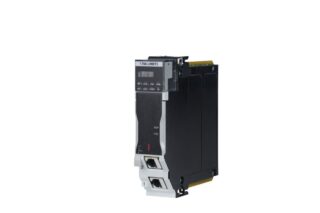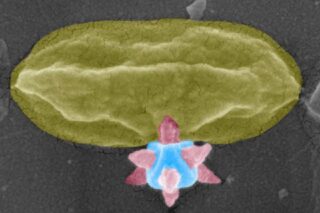At the 2025 Paris Air Show, which opened today in Le Bourget, U.S.-based aerospace disruptor Radia is making a commanding debut on the European stage with the unveiling of its WindRunner™. This ultra-large, dual-use cargo aircraft is engineered to address one of global logistics’ most persistent challenges: transporting oversized loads to remote, infrastructure-limited regions. A detailed scale model of the aircraft is on display at Radia’s stand (Hall 5, D276). The first flight is targeted for 2029, with entry into service expected in the early 2030s. We spoke with Julien Pedron, Supply Chain Program Manager at Radia, at the company’s booth to learn more about the project’s vision and development.
A New Chapter in Oversized Logistics
Radia’s WindRunner is set to become the largest aircraft by volume ever built, offering a massive 7,700 cubic meters of internal space — roughly 12 times the capacity of a Boeing 747. It will also offer a payload capacity of up to 80 tonnes. But it’s not just size that makes it revolutionary.
“The innovation is really in the volume and accessibility,” says Julien Pedron, Supply Chain Program Manager at Radia. “No one’s been able to combine this kind of volume with the ability to land on unpaved airstrips as short as 1,800 meters. That’s game-changing.”
By combining extreme cargo capacity with minimal infrastructure requirements, WindRunner opens up a new realm of possibility for industries needing to deliver massive equipment where traditional air freight simply cannot go.
Designed for Multiple Sectors
While its applications span defense, aerospace, and humanitarian aid, WindRunner’s original design was driven by the renewable energy sector, Pedron told us:
“Wind turbine blades are getting longer — today they’re already up to 75 meters, and we’re designing for blades up to 105 meters. This aircraft will enable the next generation of wind farms to scale, even in remote locations.”
Such capability is especially critical as renewable energy developers look to tap into wind-rich but infrastructure-sparse geographies, such as deserts, highlands, and island regions.
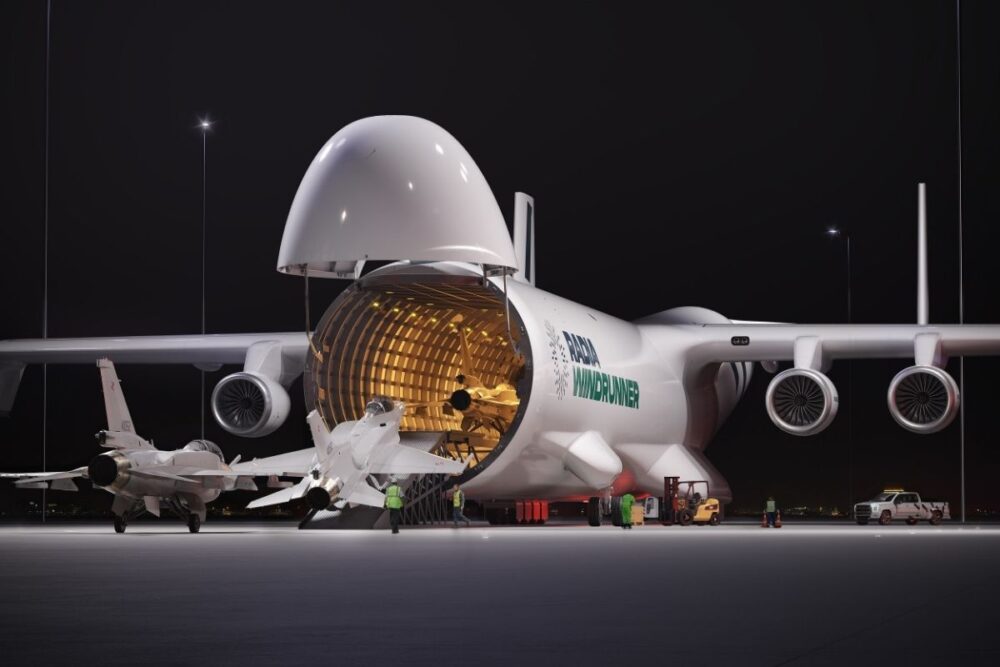
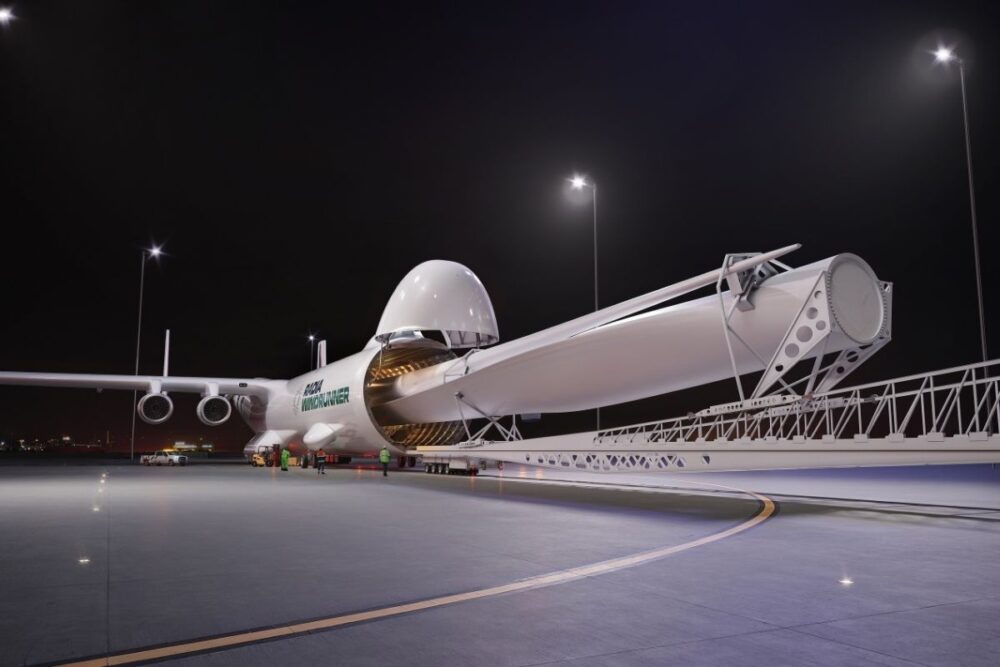
Strategic Relevance for Defense and Aerospace
With the aging of the U.S. and allied nations’ military cargo fleets — many of which haven’t seen major updates in decades — WindRunner is also drawing attention from defense clients.
“This aircraft can transport six CH-47 Chinooks or four F-16s,” Pedron notes. “It fills a gap that no other platform today can address — and it will be ready far sooner than most new military cargo developments.”
Beyond defense, WindRunner is also being positioned to support aerospace and satellite missions. With its cavernous hold, it can carry rocket stages, large satellite systems, or even Beluga parts — all of which currently face logistical bottlenecks on land.
“A SpaceX Falcon launcher can fit inside the WindRunner, as well as large satellites that are currently difficult — if not impossible — to move overland due to their size and fragility.”
The humanitarian sector could also benefit from the WindRunner which is capable of transporting large, high-volume loads to semi-prepared airstrips.
“That means we’ll be able to land in remote, hard-to-reach areas where traditional cargo aircraft can’t operate.”
Built on Proven Technology
Despite its radical implications for logistics, WindRunner’s engineering philosophy is refreshingly pragmatic.
“There’s no new R&D for exotic systems,” says Pedron. “We’re building with certified, already-flying components, including the engines. The core challenge is one of scaling and integration.”
In brief, the immediate goal is to deliver capability as soon as possible. Radia’s WindRunner program relies on a strong network of global partners.
Spain’s Aciturri Aeronáutica, expert in composite structures, leads the development of the aircraft’s tail assembly, supporting engineering and production growth in Europe.
Brazilian aerospace specialist Akaer Engenharia develops the pressurized cabin and integrates critical systems.
Meanwhile, Wisconsin-based Astronautics Corporation of America is designing and integrating advanced avionics and cybersecurity systems.
British company Element Digital Engineering handles the fuel system design and certification.
Finally, Illinois-based Ingenium Technologies is developing the aircraft’s high-lift control systems.
While Radia has not yet disclosed the engine supplier, the propulsion system is confirmed to be conventional and certified, setting the stage for faster deployment. The WindRunner will also be compatible with both conventional jet fuels and Sustainable Aviation Fuel (SAF).
Europe: The Industrial Backbone of WindRunner
Radia’s appearance at the Paris Air Show 2025 marks a strategic push into Europe, where the company is rapidly building out its industrial base. This is, in fact, the first time the scale model is being presented in France.
Strategic partnerships already include Leonardo and MAGROUP Magnaghi Aerospace in Italy and Aernnova in Spain. Upcoming collaborations are expected in France and Germany. These alliances are expected to generate billions of euros in investment and over 4,000 high-skilled jobs across the EU.
READ ALSO
Looking Ahead
With WindRunner scheduled to take flight in 2029, Radia is well ahead of the curve in anticipating the future of global logistics, where scale, reach, and infrastructure independence will be the defining capabilities.
As Pedron puts it,
“We’re not inventing new technologies — we’re assembling a new logistics architecture using the best of what’s already proven. That’s how we’ll move the world forward.”
Radia’s booth at the Paris Air Show is located in Hall 5, Stand D276 where visitors can view a WindRunner model and immersive simulations of its operational capabilities.
